No additional tools are required to remove a plaster splint. Using bandage scissors, cut the circular bandaging at the open side of the splint. The plaster can then be removed effortlessly from the limb [Figures 135, 136].
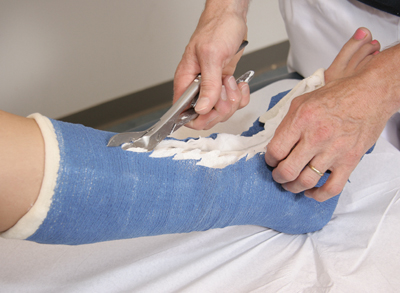 Figure 135
Figure 135
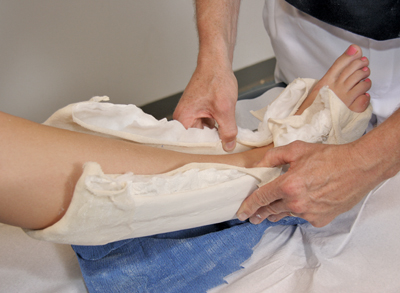 Figure 136
Figure 136
To remove a circumferential plaster cast, specially-designed tools are required. In Figure 139 the plaster saw, plaster shears and plaster spreader are illustrated. The various steps involved are shown below. The method shown in Figure 137 can lead to severe bruising or a new fracture.
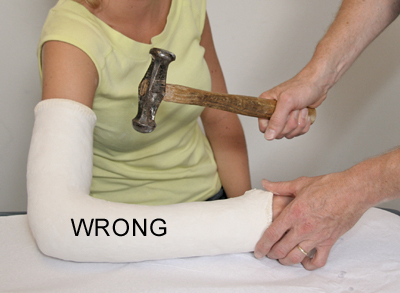 Figure 137
Figure 137
Procedure
- Reassure the patient by explaining that the only purpose of the seemingly dangerous material is to finally release them from their cast in a pain-free manner.
- Use the oscillating saw to saw open the cast, or use the hand saw to make a groove in the cast [Figure 138].
- Take care not to damage the exposed skin should the hand saw accidentally slip.
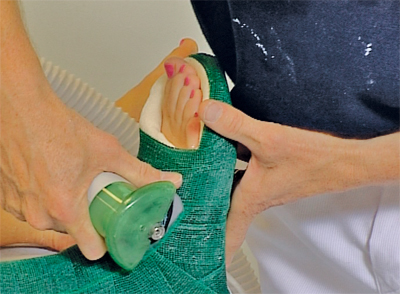 Figure 138
Figure 138
- Slide the lower blade of the plaster shears between the layer of padding and the layer of plaster, and cut through the latter in a stepwise manner [Figure 139].
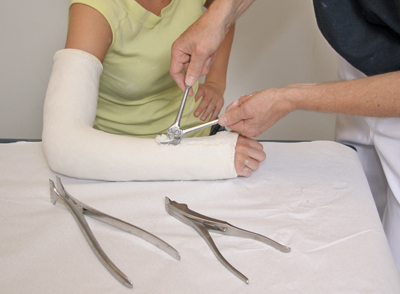 Figure 139
Figure 139
- Use the plaster spreader to break the cast open [Figure 140].
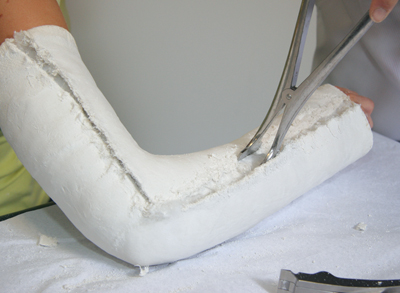 Figure 140
Figure 140
- Remove the plaster cast and the layer underneath.
- Inspect the skin, checking in particular for signs of fungal infection.
- If necessary, advise the patient on further rehabilitation.




























